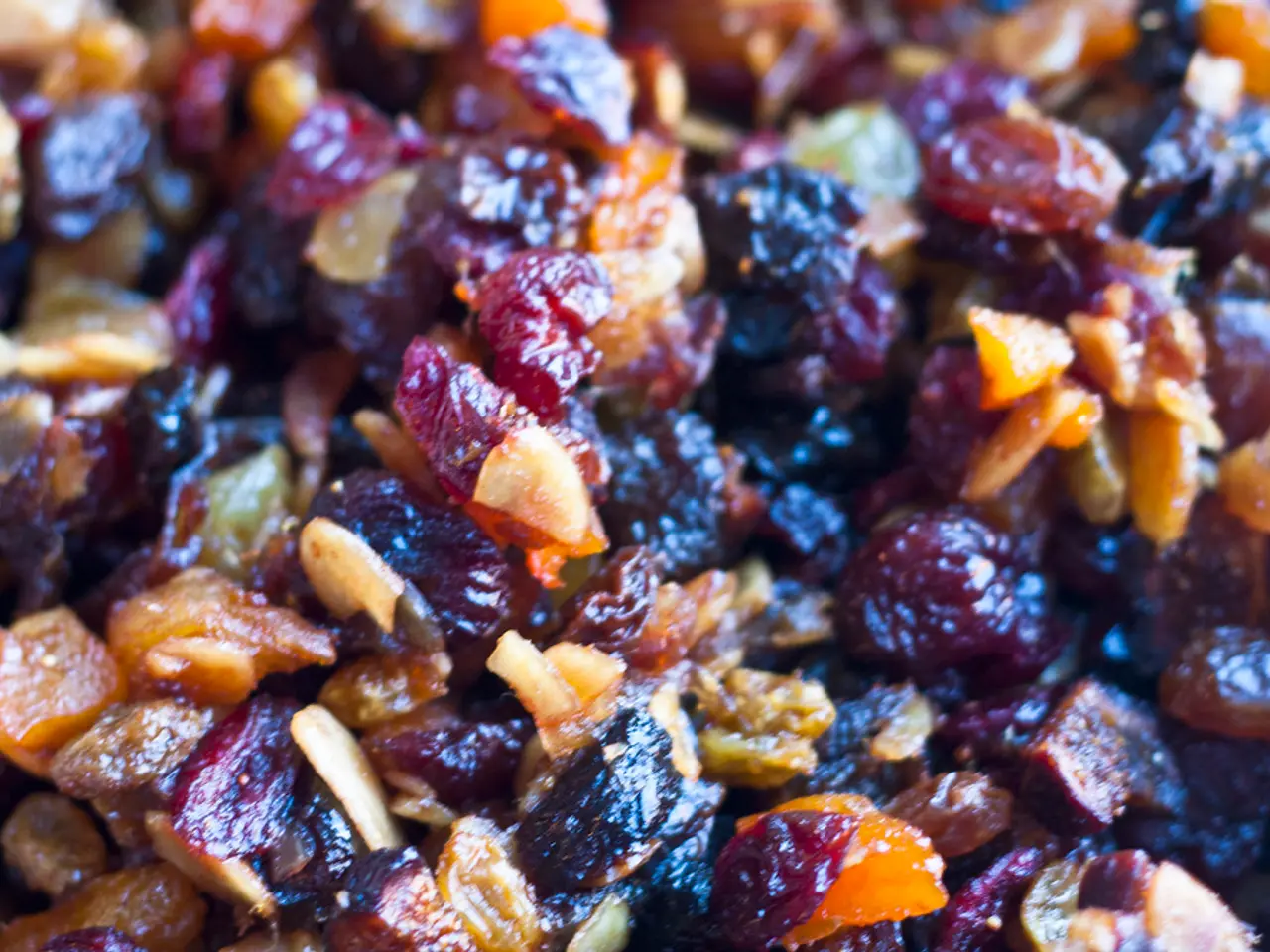Dietary Guidelines for Parkinson's Disease: Foods to Include and Exclude
In the United States, around 50,000 people receive a diagnosis of Parkinson's disease each year, a neurological condition that affects movement and can affect anyone, with a higher prevalence in males [1]. As the symptoms of Parkinson's tend to develop gradually over several years, understanding the role of diet and nutrition in managing this condition is crucial.
A diet focusing on nutrient-dense, antioxidant- and omega-3-rich whole foods is recommended to help manage Parkinson’s disease symptoms and progression. Specifically, fatty fish such as salmon and sardines, flaxseeds, soybeans, fortified dairy products, tofu, whole grains, lentils, spinach, eggs, and antioxidant-rich fruits and vegetables are beneficial due to their anti-inflammatory and neuroprotective properties [1][2].
Fava beans, which contain levodopa, a key medication for Parkinson's, may help improve motor performance in people with Parkinson's without causing side effects [2]. Additionally, foods rich in iron, vitamin B1 (thiamine), vitamin C, zinc, and vitamin D may help manage symptoms. Good sources of iron include liver, red meat, beans, nuts; good sources of vitamin B1 include peas, bananas, oranges, nuts, wholegrain bread; good sources of vitamin C include citrus fruits, peppers, strawberries, broccoli, potatoes; good sources of zinc include meat, shellfish, bread, cereal products; good sources of vitamin D include oily fish, red meat, egg yolks, certain fortified foods [3].
On the other hand, foods to avoid due to their potential negative effects include those high in saturated fats (e.g., red meat, butter, cheese, palm oil, and fried foods), ultraprocessed foods such as packaged snacks, sugary drinks (including diet sodas), canned meals, and other foods with additives. These foods may increase inflammation, impair gut health, speed up Parkinson’s symptom progression, and interfere with treatments like levodopa, especially when high-protein foods are consumed simultaneously with the drug [1][3][5].
People with Parkinson's may have difficulty with chewing and swallowing foods, and may wish to avoid hard, dry, crumbly, tough or chewy foods. The Parkinson's Foundation suggests that people with Parkinson's follow a diet that is rich in grains, vegetables, and fruits, low in fat, saturated fat, and cholesterol, and limited in sugar and salt [4].
In summary, a balanced diet that includes a variety of nutrient-rich foods and limits processed and high-fat foods can help manage Parkinson’s disease symptoms and slow its progression. It's essential to consult with a healthcare professional for personalised dietary advice.
References: [1] https://www.ncbi.nlm.nih.gov/pmc/articles/PMC6157965/ [2] https://www.ncbi.nlm.nih.gov/pmc/articles/PMC6064409/ [3] https://www.ncbi.nlm.nih.gov/pmc/articles/PMC6045972/ [4] https://www.parkinson.org/Understanding-Parkinsons/Living-with-Parkinsons/Diet-and-Nutrition/Diet-and-Nutrition-Basics [5] https://www.ncbi.nlm.nih.gov/pmc/articles/PMC6361283/
- Beyond Parkinson's disease, other health-and-wellness concerns like diabetes, atopic disease, and psoriasis also require careful diet management for effective control.
- Omega-3, known for its anti-inflammatory properties, can be beneficial in managing psoriasis and other inflammatory skin conditions like dermatitis.
- The preventive role of foodandfoodbenefits in diabetes and other medical-conditions, such as arthritis and ulcerative colitis, is increasingly being recognized through scientific research.
- Research suggests that a balanced diet, rich in whole grains, lean proteins, and Omega-3 fatty acids, may help reduce the risk of developing neurological-disorders like Alzheimer's disease.
- AQ (aqua) intake plays a significant role in maintaining the overall health-and-wellness of an individual, as well as promoting proper nutrient absorption and body function.
- In addition to fatty fish, other sources of Omega-3 such as flaxseeds, chia seeds, and walnuts, can be incorporated into daily nutrition to combat conditions like depression and anxiety.
- A diet low in saturated fats and refined sugars, and high in fruits, vegetables, and whole grains is often recommended for managing Crohn's disease and other inflammatory bowel diseases like ulcerative colitis.
- Therapies-and-treatments for Parkinson's disease usually consider the impact of diet on symptom management, with a focus on essential nutrients and avoiding foods high in saturated fats.
- People with atopic disease or psoriasis may find relief through specific diets, such as the Mediterranean diet, which emphasizes Omega-3-rich foods, antioxidants, and limited intake of red meat and saturated fats.
- Fitness-and-exercise can help reduce symptoms and slow progression in conditions like Parkinson's disease, diabetes, and depression, making a balanced diet an integral part of overall health management.
- Type 2 diabetes and psoriatic arthritis share common risk factors like obesity and inflammation, making it crucial to address nutrition and exercise when devising treatment plans.
- Overall, understanding the predictive role of diet in various health conditions, from fitness-and-exercise performance and mental health to managing specific diseases like diabetes, psoriasis, and NSCLC (non-small cell lung cancer), encourages us to adopt healthier eating habits for a better quality of life.




